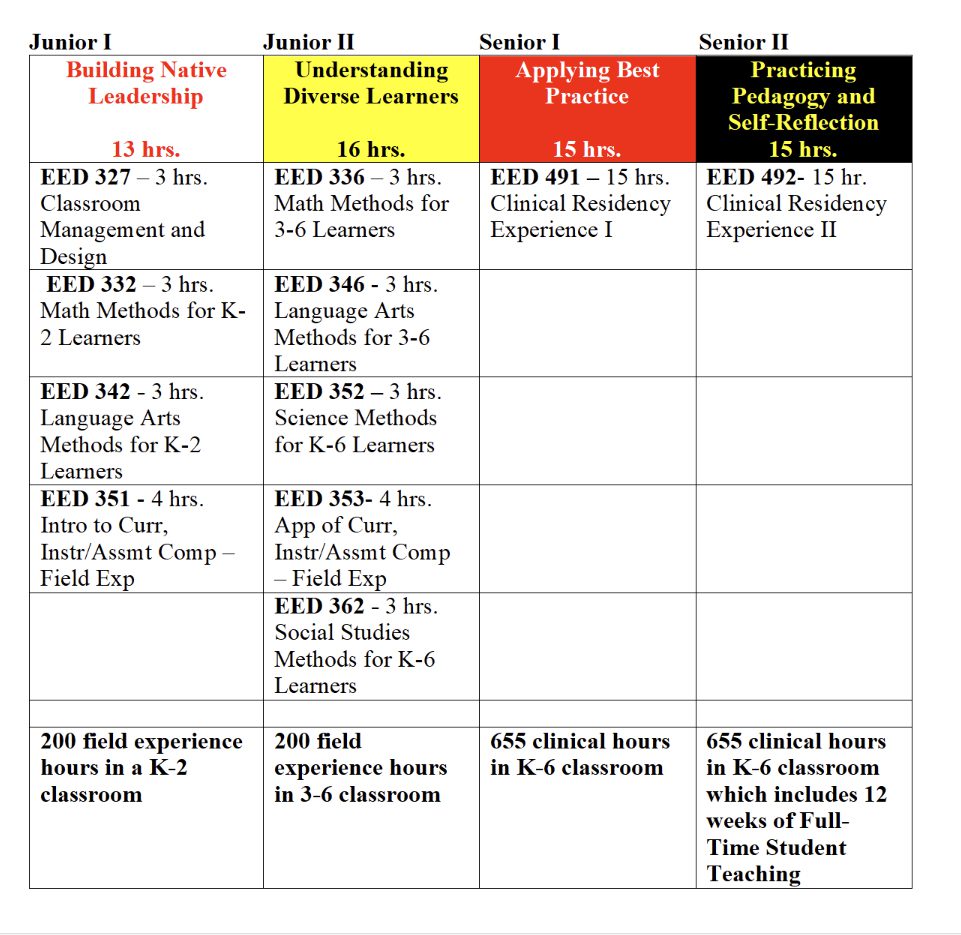Program Overview
Elementary Teacher Education Program of Study Overview
An integral part of the ETEP is the inclusion of American Indian/Alaska Native perspectives to enhance the development of Native Leaders who are critical thinkers, high achievers, reflective practitioners, and caring leaders for tomorrow’s learners. The ETEP is divided into four specific semester blocks. Each block is identified by a focus domain which is embedded in each course. Candidates must earn a grade of “C” or better in each course to allow advancement to the next semester block of study. Candidates are provided with varying levels of elementary classroom field experience during the four semester blocks.
Junior through Senior Year Overview




